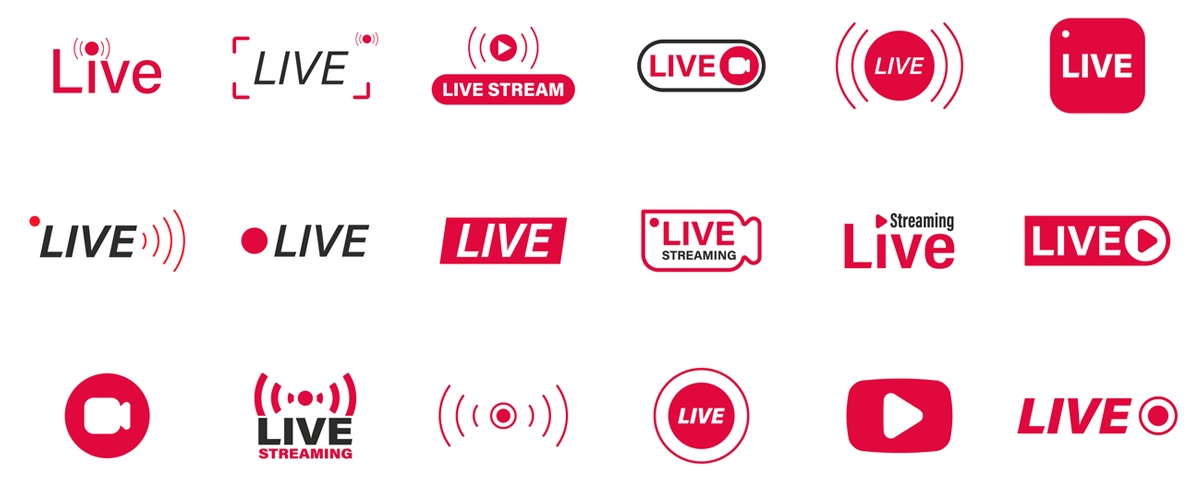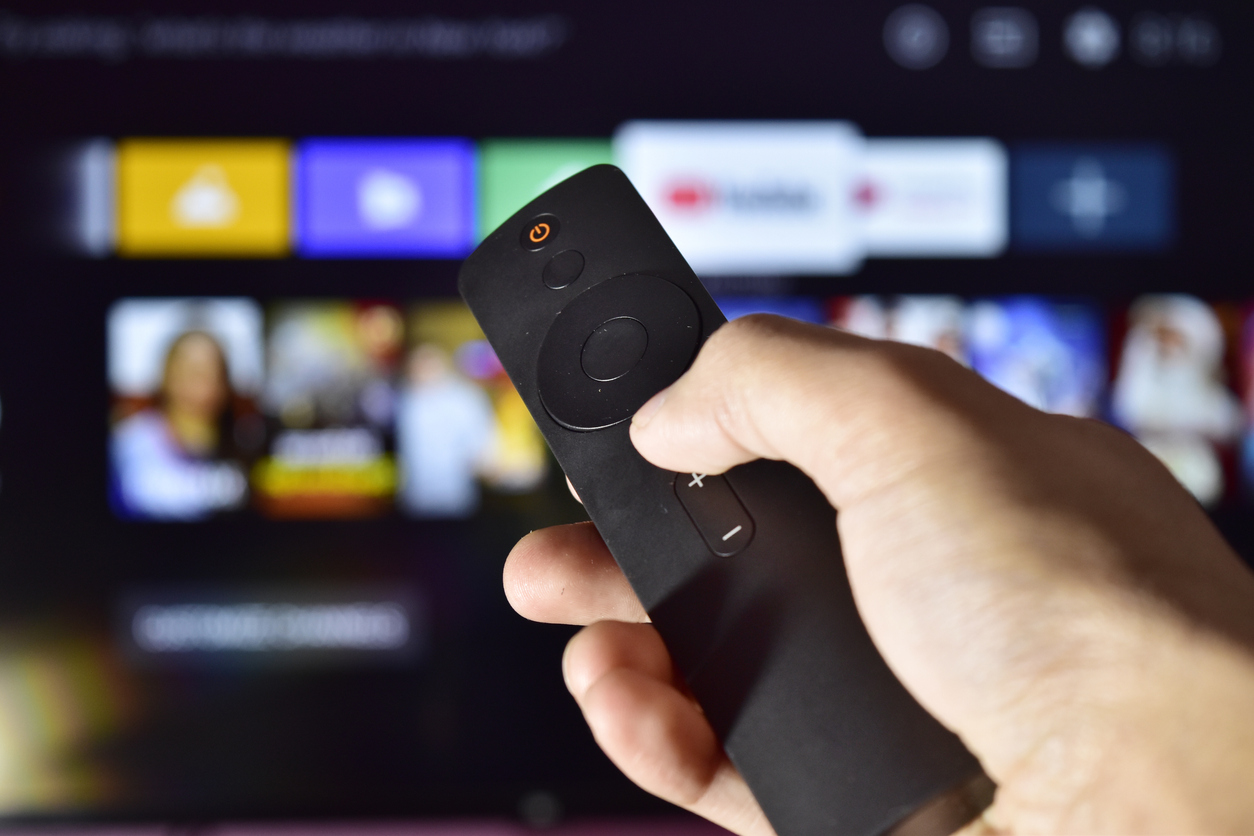At the present time, live streaming is among the most popular forms of broadcasting. For years now, top companies such as Microsoft, Google, Apple, and Amazon have been benefiting from live streaming.[1] Live and video on demand or VOD streaming are now ingrained into the everyday lives of many people.[2] Business meetings and classes are done online through various applications on computers and other devices. It is easy to watch movies and television series through online streaming apps and websites. A lot of people are also earning huge amounts of money through streaming their favorite games or by simply showcasing their talents online.
Streaming is a common thing for most people today, but have you ever wondered how it started? The history of live streaming is filled with amazing and peculiar facts. But like other successful things, the road to becoming one of the most popular broadcasting forms was not easy. In fact, the success that streaming has today came after many years of drought.[1] If you are curious to find out how streaming became what we know today, we are here to help you. In this post, we’re giving you the timeline of the rise of streaming.
The Beginning of Streaming
Before, people have always liked live content instead of pre-recorded ones. Most of us enjoy listening to our favorite radio stations, going to concerts, and watching live television shows. However, the world we have today is fast-changing. With that, new and fascinating technologies are being introduced regularly. One of the technologies that have changed the lives of people is streaming or live streaming. But how did it start?
The Xerox PARC Live Stream
Live streaming began in the good old ‘90s, during the time when Macarena was about to become popular, and Gwen Stefani’s genre was still punk rock. Aside from these, there was a less-punk-rock band back in 1993 that was making waves in the tech world, and they are known as Severe Tire Damage, which was the first live internet band.[2]
On June 24, 1993, two computer engineers and scientists from the band performed their usual gig. But their colleagues at Xerox PARC in California decided to experiment with some new technology. At that moment, live streaming was born, way before the “Facetube” era. It is also possible that if it wasn’t for music, live streaming wouldn’t have been invented.
The people from Xerox PARC broadcasted Severe Tire Damage’s gig over a niche network called Mbone or multicast backbone, which could be watched as far as Australia. This was the first-ever instance of live streaming both video and audio. The band continuously live-streamed their shows. However, they did it only as private activities.[1] In the following year, Severe Tire Damage was joined by the Rolling Stones as live streaming pioneers.
RealNetworks and Baseball
In 1995, a company called RealNetworks created the very first media player named RealPlayer, which was capable of live streaming. Later in the same year, the company hosted its first public stream.[1] ESPN took advantage of the technology to broadcast the Seattle Mariners vs. New York Yankees game.[2] However, during these times, streaming still remained something of an experiment when it came to monetization and needed more successful cases.
In 1997, RealVideo was launched by RealNetworks. It was among the first programs to commercialize live video streaming. However, it still wasn’t enough for live streaming to blossom during those times.[1]
The Webcast of the “Third Way Politics in the Information Age”
On November 8, 1999, the very first presidential webcast was held at George Washington University in Washington DC. Excite@Home Network produced the webcast along with the Democratic Leadership Council. Thanks to Bill Clinton joining in the event, the Third Way Politics in the Information Age was the true birth of live streaming.
The format of the show was mainly an online discussion. The President and participants covered various delicate issues, such as gun control and Medicare, through questions submitted by over 50,000 online users that logged in to the chat.[1]
Some of the key technologies that also entered the picture from 1990 to 1999 include Macromedia Flash Player, which later on became Adobe Flash Player, along with two streaming protocols that are still being used today, which are the Real-Time Messaging Protocol or RTMP and the Real-Time Streaming Protocol or RTSP.[2]
The Rise of Live Streaming
Adobe Flash became tantamount to video streaming as bandwidth grew and compression technologies advanced. RTMP, on the other hand, worked behind the scenes as the signal-caller. Broadband penetration was growing, and mobile cellular technologies were also advancing. During this era, Adobe Flash was in its glory days, powering around 98% of internet browsers.[2]
While Adobe Flash was living its best life, Steve Jobs decided to shake things up. He criticized Flash for being proprietary. After this, he announced that the iPhone, which would be launched in 2007, would not support Flash and instead would stream video using its own proprietary format, which is the HTTP Live Streaming or HLS.[2]
From 2001 to 2010, the concept of internet video started to play a role in mass media, with streaming services like YouTube and Justin.tv, which would later become Twitch.
YouTube: YouTube hosted its first live event called YouTube Live in 2008. The event was live-streamed from Tokyo and San Francisco at the same time. It featured interviews and performances from stars like Smosh, MythBusters, Katy Perry, and Bo Burnham. However, something was still off even though this live event was successful. Back then, YouTube did not become a specialized live streaming platform. It only hosted occasional live broadcasts. Some of the most popular ones include the U2 concert in 2009 and a live question and answer session with Barack Obama in 2010.
Twitch: Questionably, YouTube was slow to push its streams to the market. That is why other companies managed to take advantage of it. Twitch.tv, which is formerly known as Justin.tv, introduced a new streaming platform in 2011, which is designed specifically for video games. Back in that year, it did not seem apparent that this idea was even the slightest bit gainful. But in just a couple of years, it had more than 45 million viewers in a month.[1]
The Modern Era of Streaming
Steve Jobs indeed had a point, as moving away from Flash gave him lots of profits. Particularly, HTTP-based technologies beat the RTMP protocol when it comes to scale and quality. This is because they enable content distributors to dispense chunk-based adaptive bitrate media files across web servers instead of demanding dedicated streaming servers.
Moving to adaptive streaming helped combat buffering. It also improved caching effectiveness in one fell leap. With the dethronement of RTMP, there were a set of propriety technologies that were looking to seize the throne, which included Microsoft Smooth, Adobe HDS, and Apple HLS. In 2012, the MPEG-DASH was created as an alternative to vendor-specific technologies.
When YouTube transferred from Flash to HTML5, it selected DASH as the default protocol. However, this move also introduced a new issue, which is latency. In the 2010s, live streaming succeeded along with video consumption on mobile devices. However, latency also came along. For example, when millions of people watch a YouTube Live simultaneously, the broadcast would come with a 20-second delay.[2]
It was also in the 2010s when Smart televisions began to gain traction in the market. In 2011, Amazon Prime Video was launched for Prime users. In 2012, 25% of households were connected to a television, and 10 million authenticated devices accessed the 2012 Summer Olympics. In 2013, the very first original series on Netflix was launched, which was titled “House of Cards.” At the same time, Google launched Chromecast. During this time, online video is more than 50% of all internet traffic.[3]
The success of Twitch was a turning point in the history of streaming. Later on, YouTube adopted its streaming policy, which allowed any registered user to live stream on YouTube by the end of 2013. Other social media platforms did not want to miss this. That’s why they also immediately hopped on the live streaming train. Since 2014, content creators have been broadcasting their live videos to various platforms at the same time.[1]
In 2015, around 79% of US households got broadband at home, while 40% of smartphone owners watched videos using their mobile devices.[3] Twitter also acquired the live streaming app called Periscope in 2015. Later on, in 2016, Instagram and Facebook both presented their live streaming services, too. Ever since social media incorporated live streaming technology, it has been on a continuous and stable rise.
By 2018, over 3 million live streams were hosted on Facebook. Instagram also announced the launching of IGTV in 2018, which is a video platform intended to compete against YouTube. Also, 76% of US households have a connected television device at this time. The average time spent with connected TV increased to 15% of daily media consumption. With this, brands have also launched different products for the television, including the Apple TV.
And before 2019 ended, users from different parts of the world watched over 1 billion hours of live videos on social media platforms. In fact, according to Nielsen, at this point, streaming is 25% of total time spent with video.[3] With this, we can say that live streaming has been dominating more and more each day.
The Streaming Boom and the Death of Flash
During the initial years of the 2020s, live video streaming became omnipresent. Due to the onset of the pandemic, there was a mandated social distancing, which meant that entertainment and collaboration took place online. In addition to that, 2020 was also the year of the death of Adobe Flash. To solve latency concerns and power interactive content, broadcasters turned to video streaming protocols such as Low-Latency HLS, Web Real-Time Communications or WebRTC, Secure Reliable Transport or SRT, and CMAF for DASH.[2]
From the beginning of the 2020s up to now, live streaming has been among the most prominent forms of entertainment, communication, and marketing.[1] Some of the highpoints of the early 2020s encompassed the first fully virtual NASA and SpaceX’s launch to the International Space Station, the NFL draft, and over 3.3 trillion Zoom meetings. In addition, digital fitness, telehealth, and live commerce also became second nature to many consumers around the world.[2] It is indeed true that video technology today influences everything, for everyone, everywhere, and streaming is here to stay in the years to come.
Popularity of Streaming and Final Thoughts
One of the most important things that made streaming very popular is providing an individual or organization the capability to engage with thousands of people from different parts of the world in real time. Live chats allow streamers to connect with their viewers and make their streams very interactive and interesting to watch.
In addition to that, streaming is also cost-efficient. It does not require any expense for a live stream to be shown online, unlike television broadcasts in which you have to spend a lot for a show to air. Live streams are also less expensive when it comes to production. These things entice not only individual streamers online, but as well as businesses across the globe, specifically today that streams can be monetized. Streaming can keep people connected while in different places. It can also help spread awareness when it comes to various issues around us.
Seemingly, social media platforms with live stream options, such as YouTube, Facebook, Twitch, and Instagram, to name a few, will remain the biggest players in the global streaming industry. Surely, there will be more applications and platforms that will enter the picture in the coming years, offering more developed streaming services for people. Streaming is indeed a natural evolution of every same technology that started in the early 1900s, such as the first radio broadcasts. We can only presume how streaming will change in the future, but it will positively live.
References
[1] Bybyk, A. (2022, March 29). The Fascinating History of Live Streaming. Ultimate Live Streaming Hub – Restream Blog. Retrieved May 19, 2022, from https://restream.io/blog/history-of-live-streaming/
[2] Ruether, T. (2022, May 18). History of Streaming Media [infographic]. Wowza Media Systems. Retrieved May 19, 2022, from https://www.wowza.com/blog/history-of-streaming-media
[3] Rothwell, J. (2020, December 16). The evolution of streaming, a timeline [infographic]. MediaVillage. Retrieved May 19, 2022, from https://www.mediavillage.com/article/the-evolution-of-streaming-a-timeline-infographic/








